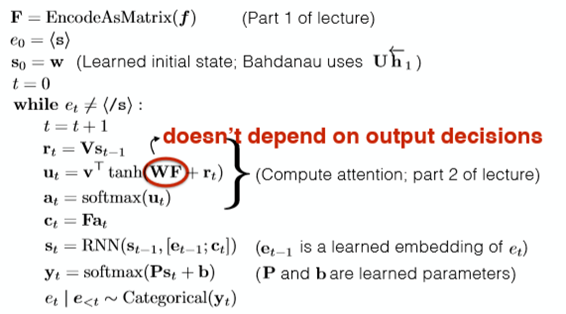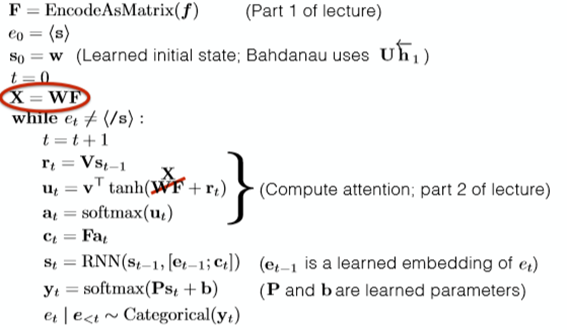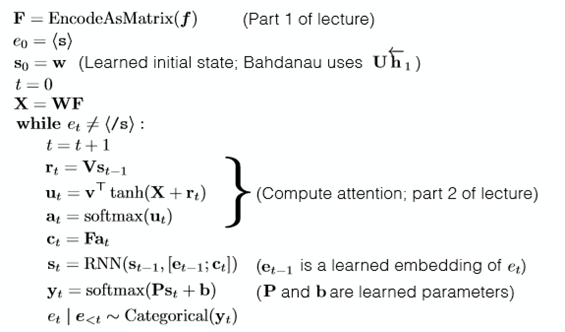【NLP】Conditional Language Modeling with Attention
Review: Conditional LMs

Note that, in the Encoder part, we reverse the input to the ‘RNN’ and it performs well.
And we use the Decoder network(also a RNN), and use the ‘beam search’ algorithm to generate the target statement word by word.
The above network is a translation model.But it still needs to optimizer.
A very essential part of the model is the [Attention mechanism].
Conditional LMs with Attention
First: talk about the [condition]
In last blog, we compress a lot of information in a finite-sized vector and use it as the condition. That is to say, in the ‘Decoder’, for each input we use this vector as the condition to predict the next word.
But is it really correct?
An obvious thing is that a finite-sized vector cannot contain all the information since the input sentence could have a very one length. And gradients have a long way to travl so even LSTMs could forget!
In Translation Question, we can solve the problem by this:
Represent a source sentence as a matrix whose size can be changeable.
Then Generate a target sentence from the matrix. (As the condition and the condition is transformed form that matrix)
So how does this do?
The very simpal way to fulfill that is [With Concatenation].
We have already known that the words can be represented by ‘embedding’ such as Word2Vec. And all the embeddings have the same size. For a sentence composed by n words, we can just put each word’s embedding together. So the matrix size is |vocabulary size|*n, which n is the length of sentence. That’s a really easy solution but it is useful. E.g.
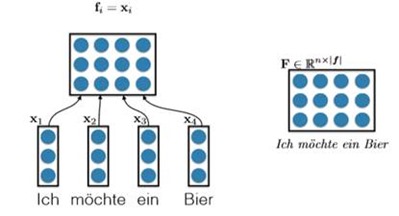
Another solution proposed by Gehring et al. (2016,FAIR) is [With Convolutional Nets].
It is to say, we use all embedding of the word from the sentence to form the concatenation matrix (just like the above method), and then we use a CNN to handle this matrix using some filters. And final we also generate a new matrix to represent the information. And in my opinion, this is a bit like extracting advanced features from image processing. E.g.
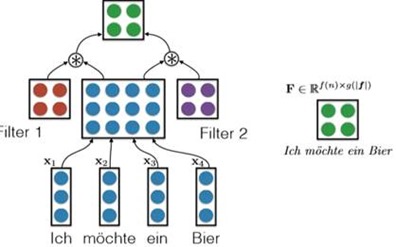
The most important method is [using the Bidirectional RNNs].
For one side, we use a RNN to handle the embedding, and we get n hidden layers which n is the length of the word.
For another side, we use another RNN to handle the embedding, but we reverse the input and finally we also get n hidden layers.
We put the 2n hidden layers together to generate the conditional matrix. E.g.
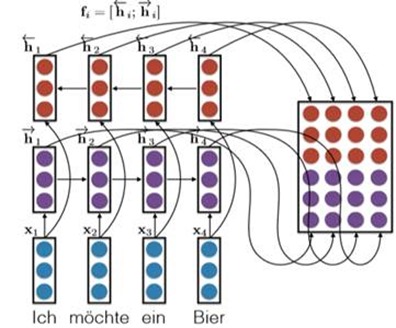
There are some other ways needed to be founded.
So next to the important part: how to use the ‘Attention model’ and use the attention to generate the condition vector form the condition matrix F.
Firstly, considering the decoder RNN:

We have a ‘start hidden layer’ and then generate the next hidden layer using the input x and we still need a conditional vector.
Suppose we also had an attention vector a. We can generate the condition vector by doing this:
c = Fa. Where F is the matrix and a is the attention vector. This can be understood as weighting the conditional matrix so that we can pay more attention to the contents of a certain sentence.
E.g.
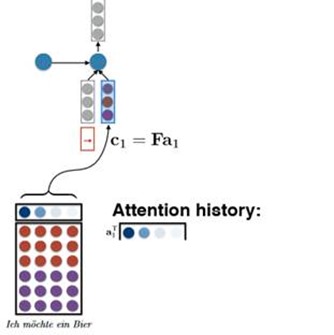
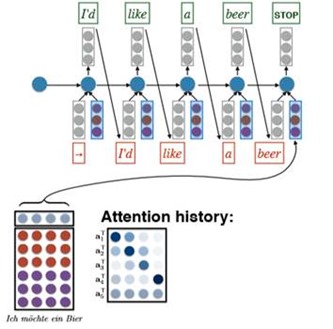
So How to generate the Attention Vector?
That is, how do we compute a.
We can do by the following method:
For the time t, we know the hidden layer Ht-1, and we do linear transformation to it to generate a vector r. ( r = VHt-1) V is the learned parameter. Then we take dot product with every column in the source matrix to compute the attention energy a. ( a = F.T*r). So we generate the attention vector a by using a softmax to Exponentiate and normalize it to 1.
That is a simplified version of Bahdanau et al.’s solution. Summary of it:
|
|
Another complex way to generate the attention vector is to use the [Nonlinear Attention-Energy Model].
Getting the r above, ( r = VHt-1) we generate a by: a = v.T * tanh(WF + r). Where v W and V is the learned parameter. How useful of the r is not to verify.
Summary
We put it all together and this is called the conditional LM with attention.
|
|
|
|
|
|
Attention in machine translation.
Add attention to seq2seq model translation: +11 BLEU.
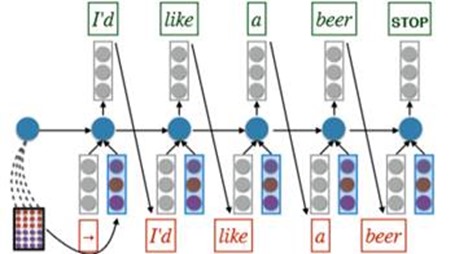
An improvement in computing:
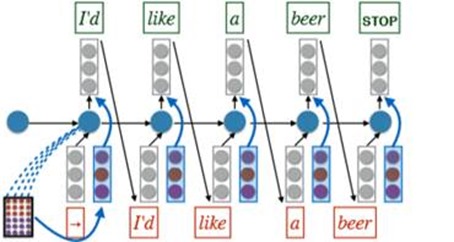
Note the difference form the above model. But whether it is useful is not sure.
About Gradients
We use the Gradient Descent.

Comprehension
Cho’s question: does a translator read and memorize the input sentence/document and then generate the output?
• Compressing the entire input sentence into a vector basically says “memorize the sentence”
• Common sense experience says translators refer back and forth to the input. (also backed up by eyetracking studies)
Image caption generation with attention: brief introduction
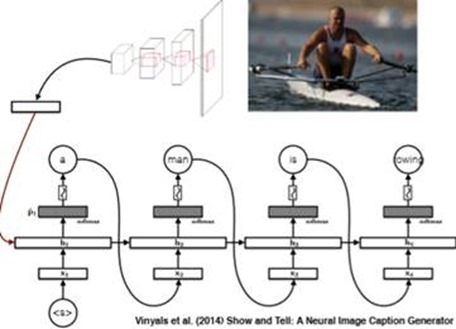
The main idea is that: we encode the picture to a matrix F and use it generate some attention and finally use the attention to generate the caption.
Generate matrix F:
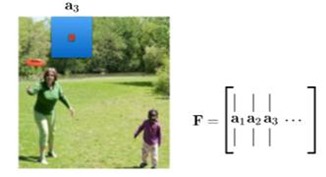
Attention “weights” (a) are computed using exactly the same technique as discussed above.
Other techinques: Stochastic hard attention(sampling matrix F idea and not like the weighting matrix F idea). Learning Hard Attention. To be honesty, I don't know much about this.
【NLP】Conditional Language Modeling with Attention的更多相关文章
- 【NLP】Conditional Language Models
Language Model estimates the probs that the sequences of words can be a sentence said by a human. Tr ...
- 【NLP】Tika 文本预处理:抽取各种格式文件内容
Tika常见格式文件抽取内容并做预处理 作者 白宁超 2016年3月30日18:57:08 摘要:本文主要针对自然语言处理(NLP)过程中,重要基础部分抽取文本内容的预处理.首先我们要意识到预处理的重 ...
- [转]【NLP】干货!Python NLTK结合stanford NLP工具包进行文本处理 阅读目录
[NLP]干货!Python NLTK结合stanford NLP工具包进行文本处理 原贴: https://www.cnblogs.com/baiboy/p/nltk1.html 阅读目录 目 ...
- 【NLP】前戏:一起走进条件随机场(一)
前戏:一起走进条件随机场 作者:白宁超 2016年8月2日13:59:46 [摘要]:条件随机场用于序列标注,数据分割等自然语言处理中,表现出很好的效果.在中文分词.中文人名识别和歧义消解等任务中都有 ...
- 【NLP】基于自然语言处理角度谈谈CRF(二)
基于自然语言处理角度谈谈CRF 作者:白宁超 2016年8月2日21:25:35 [摘要]:条件随机场用于序列标注,数据分割等自然语言处理中,表现出很好的效果.在中文分词.中文人名识别和歧义消解等任务 ...
- 【NLP】基于机器学习角度谈谈CRF(三)
基于机器学习角度谈谈CRF 作者:白宁超 2016年8月3日08:39:14 [摘要]:条件随机场用于序列标注,数据分割等自然语言处理中,表现出很好的效果.在中文分词.中文人名识别和歧义消解等任务中都 ...
- 【NLP】基于统计学习方法角度谈谈CRF(四)
基于统计学习方法角度谈谈CRF 作者:白宁超 2016年8月2日13:59:46 [摘要]:条件随机场用于序列标注,数据分割等自然语言处理中,表现出很好的效果.在中文分词.中文人名识别和歧义消解等任务 ...
- 【NLP】条件随机场知识扩展延伸(五)
条件随机场知识扩展延伸 作者:白宁超 2016年8月3日19:47:55 [摘要]:条件随机场用于序列标注,数据分割等自然语言处理中,表现出很好的效果.在中文分词.中文人名识别和歧义消解等任务中都有应 ...
- 【NLP】Attention Model(注意力模型)学习总结
最近一直在研究深度语义匹配算法,搭建了个模型,跑起来效果并不是很理想,在分析原因的过程中,发现注意力模型在解决这个问题上还是很有帮助的,所以花了两天研究了一下. 此文大部分参考深度学习中的注意力机制( ...
随机推荐
- 30个值得关注的Vue开源项目
译者按: 学习优秀的开源项目是提高代码水平最有效的方式. 原文: 30 Amazing Vue.js Open Source Projects for the Past Year (v.2018) 译 ...
- node处理表单文件,获取formdata的数据
参考文章:https://blog.csdn.net/a895458278/article/details/48055143# 应用: formidable使用: 原生的node.js在处理客户端以P ...
- react create-react-app 怎么添加sass
一.先上官方文档 https://github.com/facebook/create-react-app/blob/master/packages/react-scripts/template/RE ...
- [JS设计模式]:单例模式(1)
什么是单例模式 所谓单例,就是一个类只有一个实例,实现的方法一般是先判断是否存在实例,如果存在就直接返回,如果不存在就创建了再返回.这样确保了一个类只有一个实例对象. 实现的单例有很多种方式,最简单的 ...
- grid++报表使用时注意事项
#开始使用:Grid++Report 可以在 Visual C#.Net 与 Visual Basic.Net 下的 WinForm 项目中使用.在项目中使用 Grid++Report 之前,首先必须 ...
- Bootstrap-table 部分浏览器显示不出来
一.问题 近日,写了一个ASP.Net项目,但是bootstrap-table在别人的电脑上显示不出来,在自己的电脑上能显示,有些浏览器也是能显示,但部分浏览器就是显示不出来.找了很多原因,最后有个老 ...
- SQL查询获得指定格式内容
Oracle中通过修改SQL语句,达到将查询的内容拼接为指定的字符串格式 eg: select '<ta:datagridItem id="' || lower(column_name ...
- C#字符串转二进制、二进制转字符串
最近公司要做一个操作日志的模块,如果将操作日志以字符串的形式存到后台数据库,非常浪费内存,不可取,特意写了字符串与二进制相互转换的函数. 1.字符串转二进制 private string String ...
- c/c++ 继承与多态 继承时如何改变个别成员的访问属性
问题1:若类B以private的方式继承类A,但还想让类A的某些个别成员,保持public或者protected的访问属性,这时应该怎么办? 使用using,去改变访问属性. #include < ...
- javascript Json和String互转
var jsonText = "{\"id\":\"123\",\"name\":\"tom\",\&qu ...


